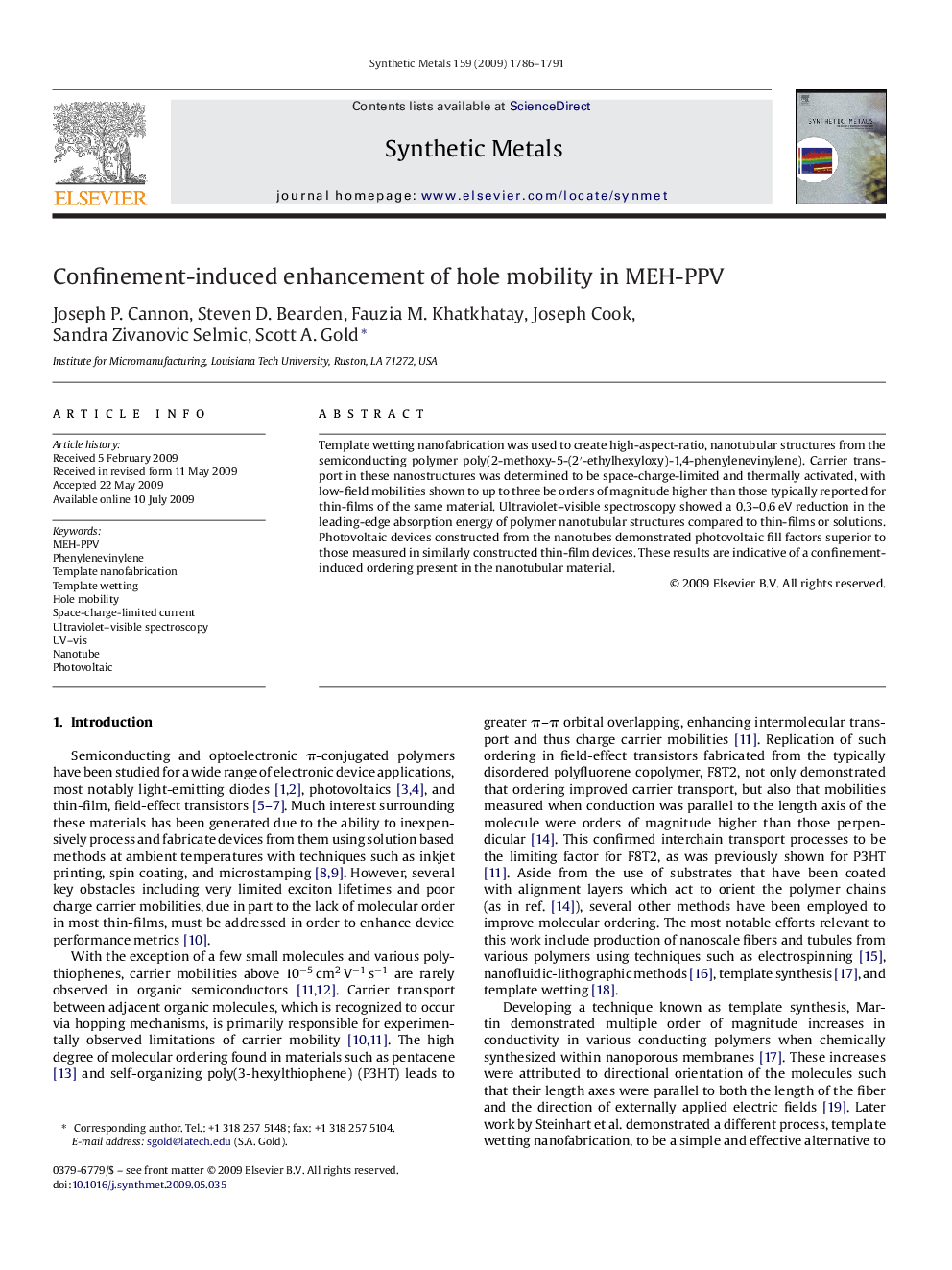| Article ID | Journal | Published Year | Pages | File Type |
|---|---|---|---|---|
| 1442973 | Synthetic Metals | 2009 | 6 Pages |
Template wetting nanofabrication was used to create high-aspect-ratio, nanotubular structures from the semiconducting polymer poly(2-methoxy-5-(2′-ethylhexyloxy)-1,4-phenylenevinylene). Carrier transport in these nanostructures was determined to be space-charge-limited and thermally activated, with low-field mobilities shown to up to three be orders of magnitude higher than those typically reported for thin-films of the same material. Ultraviolet–visible spectroscopy showed a 0.3–0.6 eV reduction in the leading-edge absorption energy of polymer nanotubular structures compared to thin-films or solutions. Photovoltaic devices constructed from the nanotubes demonstrated photovoltaic fill factors superior to those measured in similarly constructed thin-film devices. These results are indicative of a confinement-induced ordering present in the nanotubular material.
